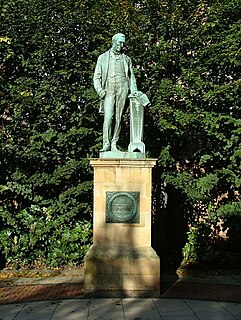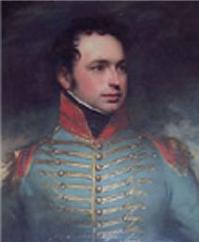Arms
 |
|
The Nepean Baronetcy, of Bothenhampton in the County of Dorset, was a title in the Baronetage of the United Kingdom. It was created on 16 July 1802 for the politician and colonial administrator Evan Nepean. He was Chief Secretary for Ireland from 1804 to 1805 and Governor of Bombay from 1812 to 1819. The title became extinct on the death of the sixth Baronet in 2002. Another member of the family to gain distinction was Herbert Evan Charles Bayley Nepean (1865–1951), son of Colonel Herbert Augustus Tierney Nepean, son of Reverend Evan Nepean, fourth son of the first Baronet. He was a Brigadier in the Indian Army. Lieutenant Colonel Evan Yorke Nepean, the 6th Baronet, was notable for having the amateur radio callsign AC4YN. With Hugh E. Richardson on a political mission to Tibet in 1936, he took this call based on his own initials and the AC4 prefix, which at that time was assigned to this country. It is famous as one of the rarest amateur stations. [1]
The family surname was pronounced "Nepeen".
 |
|

Baron Glentoran, of Ballyalloly in the County of Down, is a title in the Peerage of the United Kingdom. It was created on 8 July 1939 for the Unionist politician Herbert Dixon. In 1950 he also succeeded his elder brother as third Baronet, of Ballymenock. His son, the second Baron, was also a politician and served as the last Speaker of the Senate of Northern Ireland. As of 2017 the titles are held by the latter's son, the third Baron, who succeeded in 1995. He is a former Olympic Bobsleigh gold medallist as well as a soldier, businessman and politician. Lord Glentoran was one of the ninety elected hereditary peers who remain in the House of Lords after the passing of the House of Lords Act 1999, and sat on the Conservative benches until his June 2018 retirement under the House of Lords Reform Act 2014.

Baron Burton, of Burton-on-Trent and of Rangemore in the County of Stafford, is a title in the Peerage of the United Kingdom. It was created in 1897 for the prominent brewer, philanthropist and Liberal politician Michael Bass, 1st Baron Burton. He had already been created a baronet in 1882 and Baron Burton in 1886. However, the three titles had different remainders. The Bass family descended from William Bass, who founded the brewery business of Bass & Co in Burton upon Trent in 1777. His grandson Michael Thomas Bass transformed the company into one of the largest breweries in the United Kingdom. He also represented Derby in Parliament as a Liberal for thirty-five years and was a great benefactor to the town of Burton. However, Bass declined every honour offered to him, including a baronetcy and a peerage.

Baron Chetwode, of Chetwode in the County of Buckingham, is a title in the Peerage of the United Kingdom. It was created in 1945 for the noted military commander Field Marshal Sir Philip Chetwode, 7th Baronet. As of 2014 the titles are held by his grandson, the second Baron, who succeeded in 1950. He is the eldest son of Captain Roger Charles George Chetwode, who was killed in the Second World War.
Baron Rotherwick, of Tylney in the County of Southampton, is a title in the Peerage of the United Kingdom.

Sir Evan Nepean, 1st Baronet, PC FRS was a British politician and colonial administrator. He was the first of the Nepean Baronets.
Sir Mark John MacTaggart-Stewart, 1st Baronet, known as Mark John Stewart until 1880, was a Scottish Tory Member of Parliament in the House of Commons of the United Kingdom. He represented Wigtown Burghs from 1874–80 and again for a few months later in 1880 and also sat for Kirkcudbrightshire between 1885 and 1906 and briefly in 1910.

There have been three baronetcies created for persons with the surname Croft, one in the Baronetage of England and two in the Baronetage of the United Kingdom. All three creations are extant as of 2008.

The Bunbury Baronetcy, of Bunbury, Oxon and Stanney Hall in the County of Chester, is a title in the Baronetage of England. It was created on 29 June 1681 for Thomas Bunbury, Sheriff of Cheshire from 1673 to 1674 and the member of an ancient Cheshire family. His grandson, Henry, the third Baronet, and great-grandson, the fourth Baronet, both sat as Members of Parliament for Chester. The latter died unmarried at an early age and was succeeded by his younger brother, the fifth Baronet. He was a clergyman. On his death in 1764 the title passed to his eldest son, the sixth Baronet. He represented Suffolk in the House of Commons for over forty years but is best remembered for his marriage to Lady Sarah Lennox. He died childless in 1821 and was succeeded by his nephew, the seventh Baronet. He was the son of Henry Bunbury, younger son of the fifth Baronet. The seventh Baronet was a distinguished soldier and politician. His eldest son, the eighth Baronet, was High Sheriff of Suffolk in 1868. He died childless in 1886 and was succeeded by his younger brother, the ninth Baronet. He was Liberal Member of Parliament for Bury St Edmunds. He died unmarried in 1895 and was succeeded by his nephew, the tenth Baronet. He was the son of Colonel Henry William St Pierre Bunbury, third son of the seventh Baronet. He served as High Sheriff of Suffolk in 1908 and was a Deputy Lieutenant of the county. On his death in 1930 the title passed to his son, the eleventh Baronet. He was High Sheriff of Suffolk in 1936 and was a Deputy Lieutenant of the county. His son, the twelfth Baronet, was High Sheriff of Suffolk in 1972. As of 2014 the title is held by the latter's second but eldest surviving son, the thirteenth Baronet, who succeeded in 1985.
Philip Yorke Gore, 4th Earl of Arran, known as Philip Gore until 1837, was an Anglo-Irish peer and diplomat.

Colonel Henry George Herbert, 2nd Earl of Carnarvon DL, FSA, styled The Honourable Henry Herbert from 1780 to 1793 and Lord Porchester from 1793 to 1811, was a British peer, nobleman, and Whig politician.
There have been nine baronetcies created for persons with the surname Lloyd, three in the Baronetage of England, three in the Baronetage of Great Britain and three in the Baronetage of the United Kingdom. Two of the creations are extant as of 2010.
There have been seven baronetcies created for persons with the surname Thompson, one in the Baronetage of England, one in the Baronetage of Great Britain and five in the Baronetage of the United Kingdom. Three of the creations are extinct while four are extant. See also Thomson baronets and Meysey-Thompson baronets.
The Whitaker Baronetcy, of Babworth in the County of Nottingham, is a title in the Baronetage of the United Kingdom. It was created on 15 July 1936 for Albert Edward Whitaker. He was a Colonel in the Army and served as a Justice of the Peace, Deputy Lieutenant and High Sheriff for Nottinghamshire. The second Baronet was a Major-General in the Coldstream Guards.
The Naylor-Leyland Baronetcy, of Hyde Park House, Albert Gate, in the County of London, is a title in the Baronetage of the United Kingdom. It was created on 31 August 1895 for Herbert Naylor-Leyland, Conservative Member of Parliament for Colchester from 1892 to 1895 and Liberal Member of Parliament for Southport from 1898 to 1899. The second Baronet served as Sheriff of Denbighshire in 1921.

The Seale Baronetcy, of Mount Boone in the County of Devon, is a title in the Baronetage of the United Kingdom. It was created on 31 July 1838 for John Henry Seale, Whig Member of Parliament for Dartmouth from 1832 to 1844. The second Baronet was sixteen times Mayor of Dartmouth.

The Murray, later MacGregor of MacGregor Baronetcy, of Lanrick in the County of Perth, is a title in the Baronetage of Great Britain. It was created on 3 July 1795 for John Murray. He was a member of the Scottish MacGregor clan. This branch of the family had been forbidden to wear their own surname by King James VI, the only instance of this in British history. The ban was revoked in 1661 by King Charles II but restored during the reign of William and Mary. It was finally repealed in 1774. However, it was not until 1822 that the family obtained Royal licence to use the family surname. The second Baronet was a colonial administrator and served as Governor of Dominica, Antigua, Barbados and Trinidad. Sir Evan MacGregor, third son of the second Baronet, was Permanent Secretary to the Admiralty. The sixth Baronet was a Brigadier in the Scots Guards. The MacGregors of MacGregor are also the Chiefs of Clan Gregor.
There have been two baronetcies created for persons with the surname Mackworth, one in the Baronetage of England and one in the Baronetage of Great Britain. One creation is extant as of 2008.

The Malet Baronetcy, of Wilbury in the County of Wiltshire, is a title in the Baronetage of Great Britain. It was created on 24 February 1791 for Charles Malet, for diplomatic services in India. The second Baronet was Minister to the German Confederation from 1852 to 1866. The fourth Baronet was Ambassador to Germany between 1884 and 1895. The eighth Baronet was a Colonel in the 8th King's Royal Irish Hussars and High Sheriff of Somerset from 1966 to 1967.

The Barrow', later Crawley-Boevey Baronetcy, of Highgrove in the County of Gloucester, is a title in the Baronetage of Great Britain. It was created on 22 January 1784 for Charles Barrow, Member of Parliament for Gloucester, with remainder to Thomas Crawley-Boevey, who succeeded as second Baronet. Crawley-Boevey was husband of Ann, granddaughter of Thomas Barrow, brother of the first Baronet. His grandfather Thomas Crawley had on inheriting Flaxley Abbey in 1726 assumed the additional surname of Boevey. Flaxley Abbey had been purchased in 1648 by the merchant, lawyer and philosopher James Boevey (1622–1696) and his half-brother William Boevey. The second Baronet was succeeded by his eldest son, the third Baronet. He was High Sheriff of Gloucestershire from 1831 to 1832. His grandson, the fifth Baronet, was High Sheriff of Gloucestershire in 1882
Sir Molyneux Hyde Nepean, 2nd Baronet was an English first-class cricketer associated with Marylebone Cricket Club (MCC).